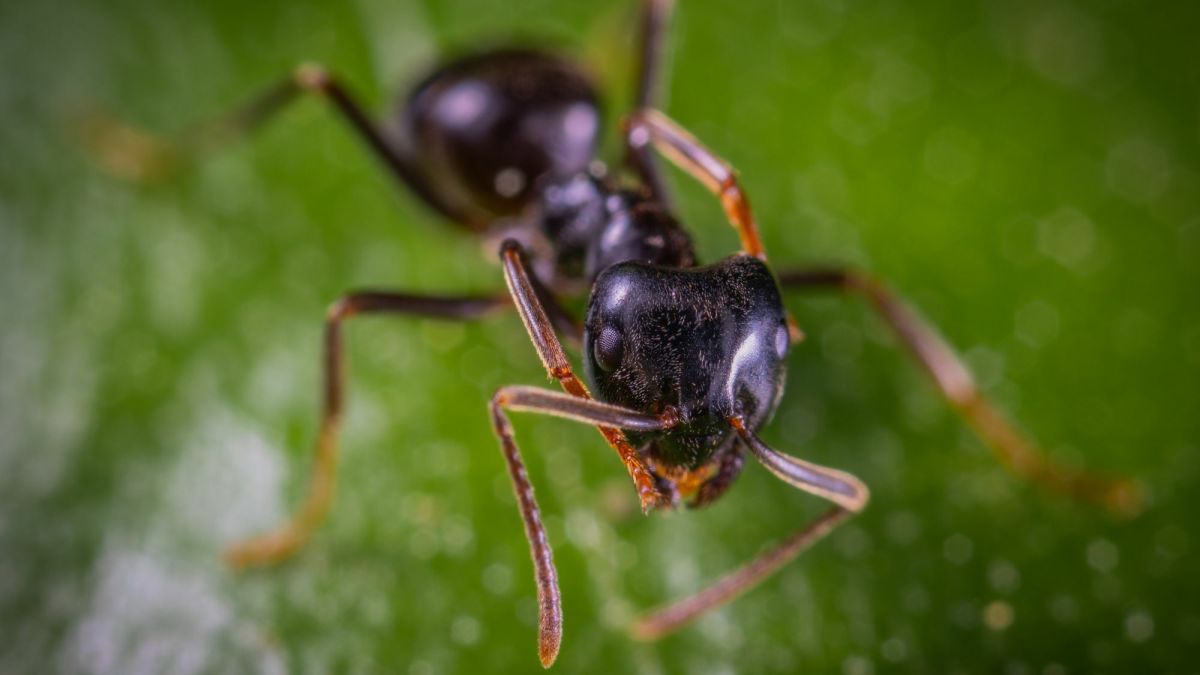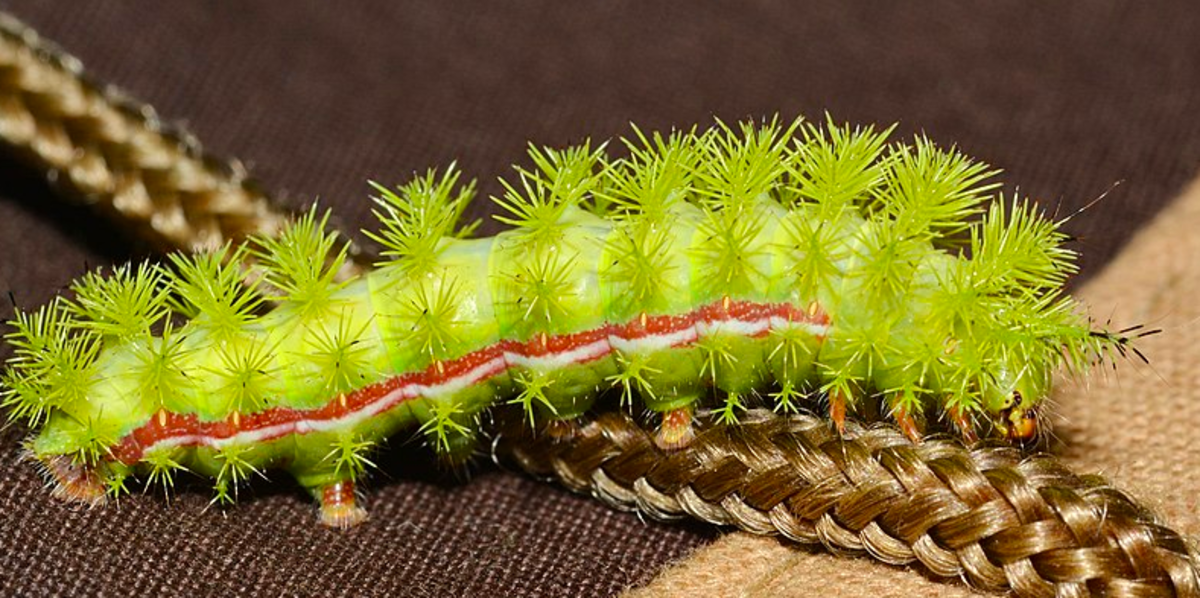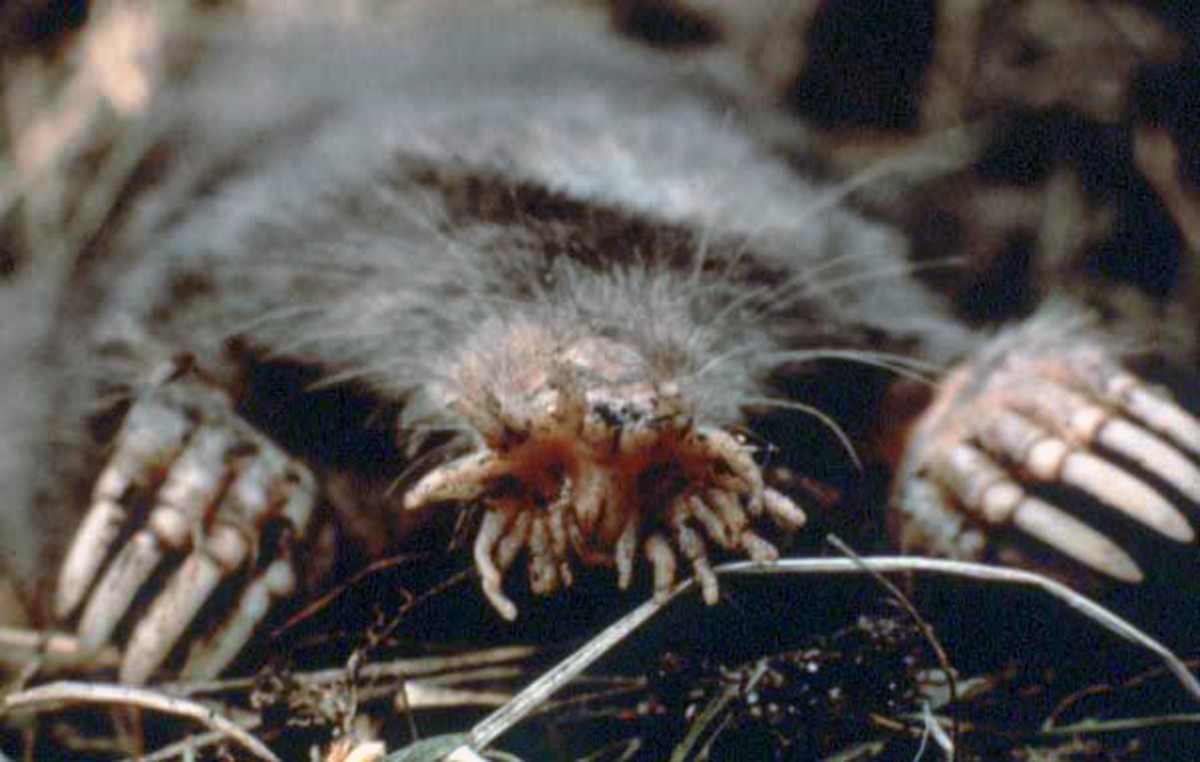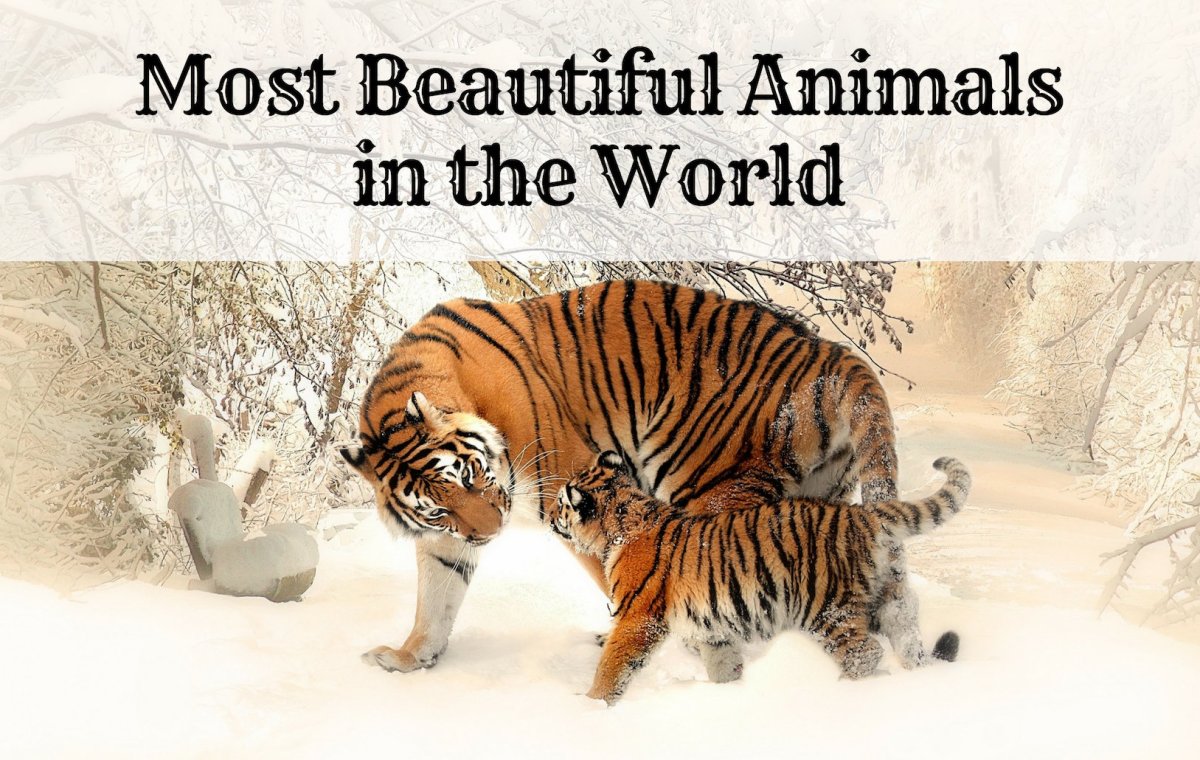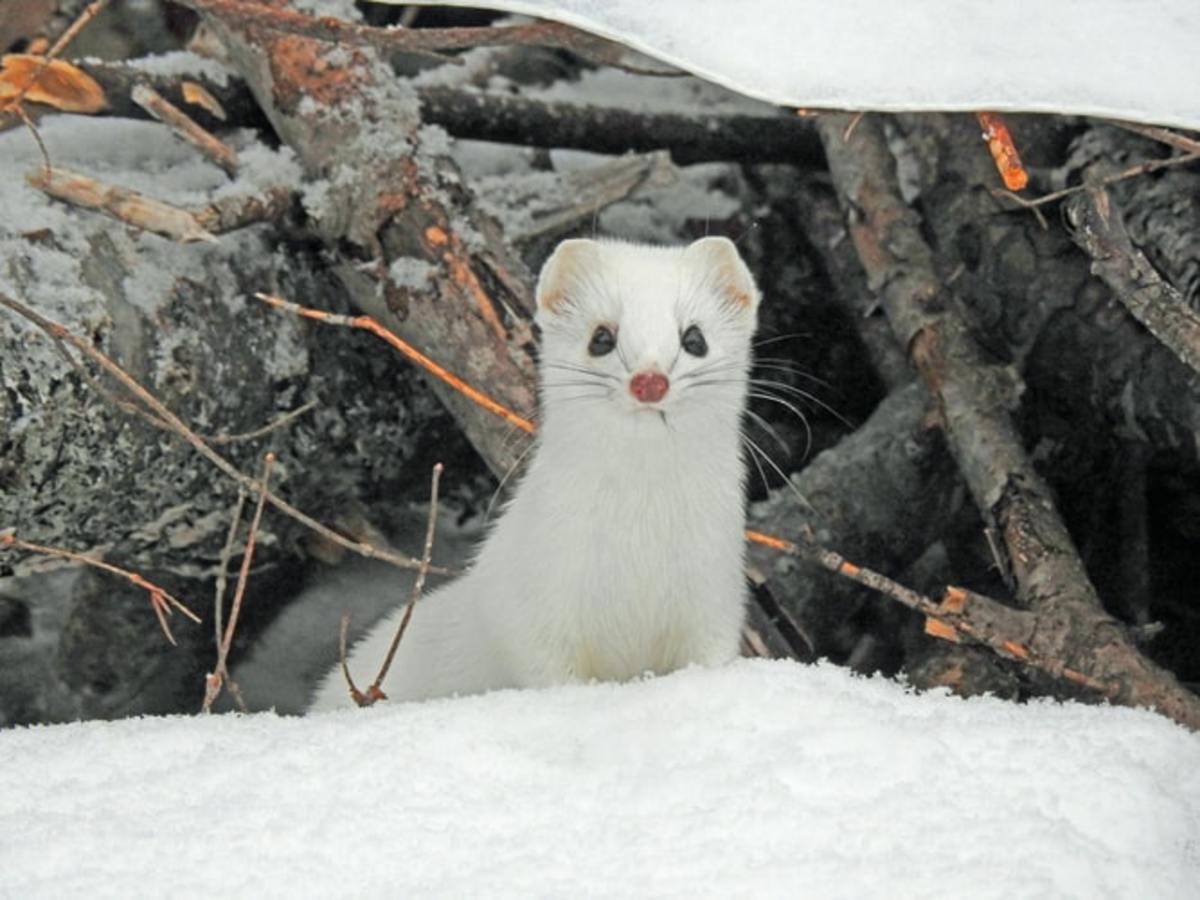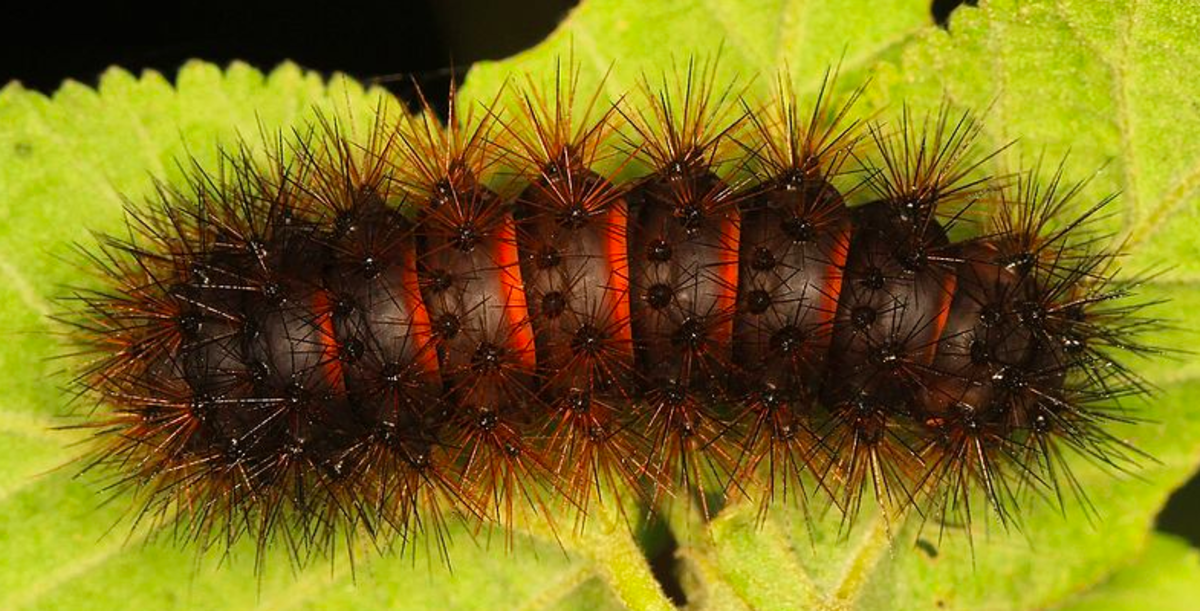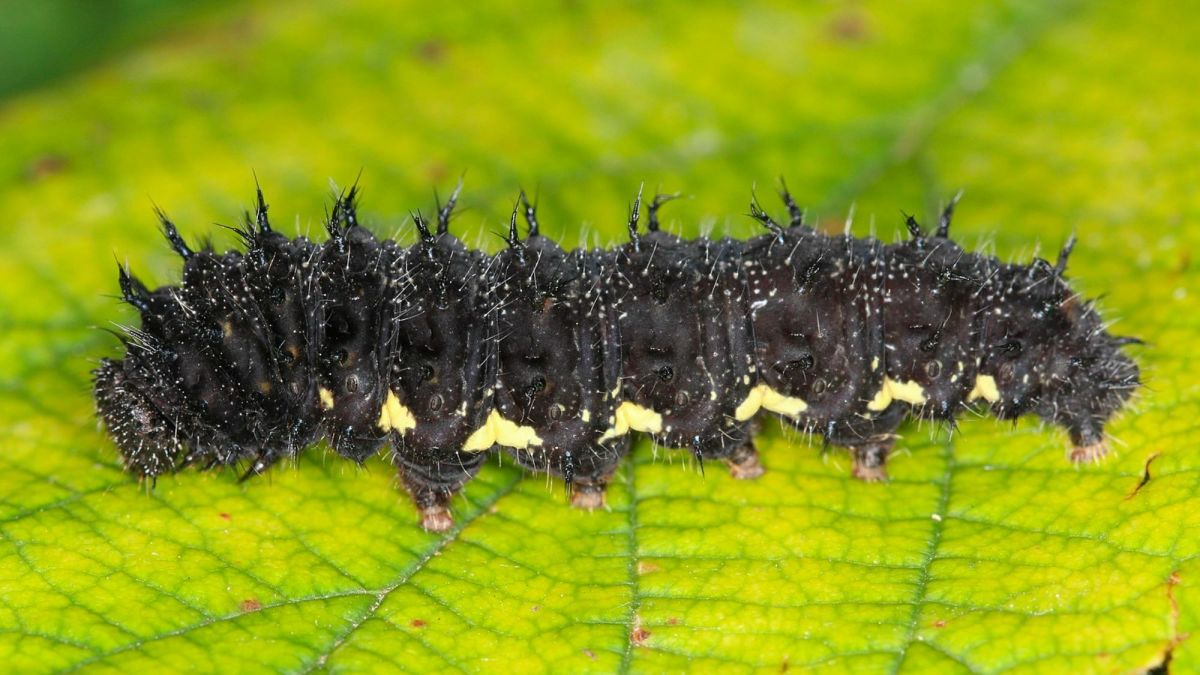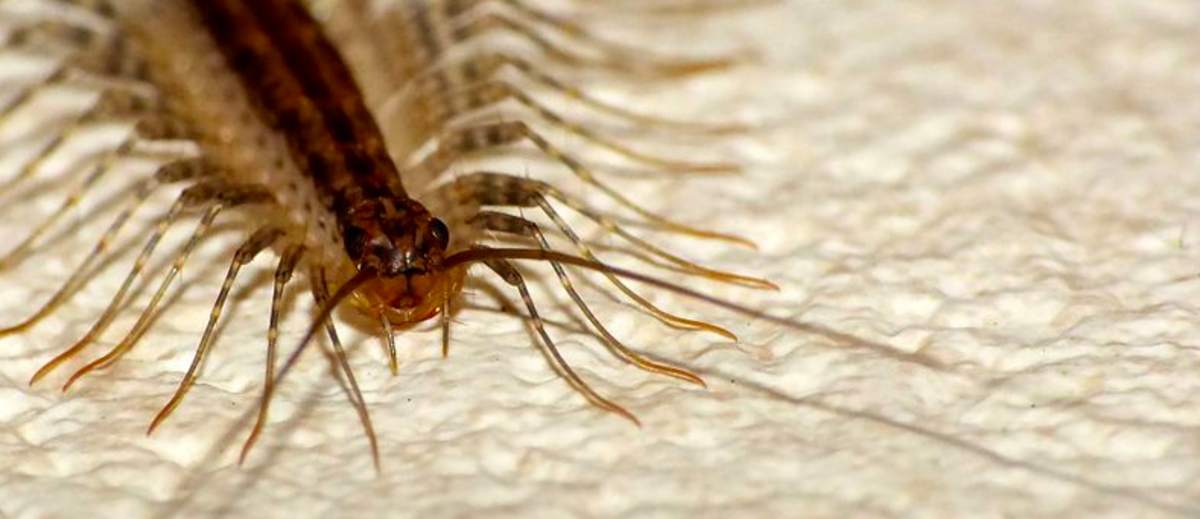- HubPages»
- Education and Science»
- Life Sciences»
- Entomology»
- Insects & Bugs
Identifying Black Dragonflies
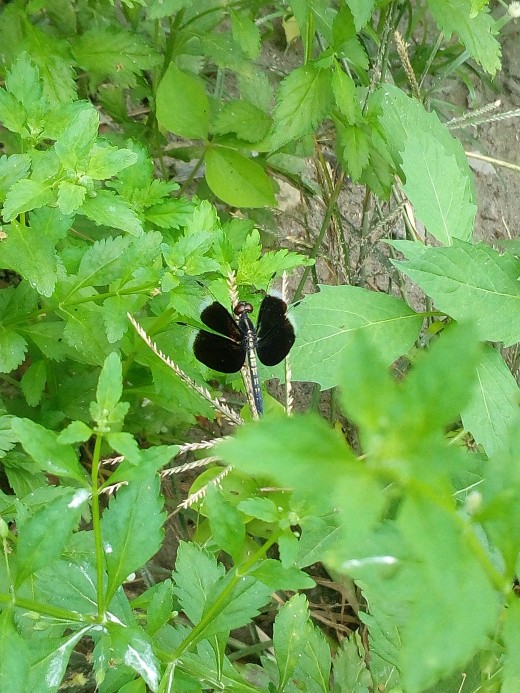
Widow Skimmer
Generally Widow Skimmers are found across the US but this little fella is seen roaming around my grandma's garden. You must be wondering that what's so strange about it, right? It's at Bangladesh, a South-Eastern Asian country.
This species is known as the "King of Skimmers". The mature Widow Skimmers have steely-blue pruinose bodies with black basal bands on the wings.
Scientific Name: Libellula luctuosa
Size : 4.2-5 cm.
Range : North US, Mexico, Canada (Ontario)
Habitat : Lake, lagoon, muddy substrates and warm places.
Flight Season: Mostly in the Summer but also seen in Spring and Fall.
Food : Flying insects like, mosquitoes, midges etc.
Widow Skimmers are surely unpredictable. Mostly they are seen roaming around waterbodies but mature Widow Skimmers could also migrate from one country to another. Maybe they could migrate from one continent to another just like this little fella did.
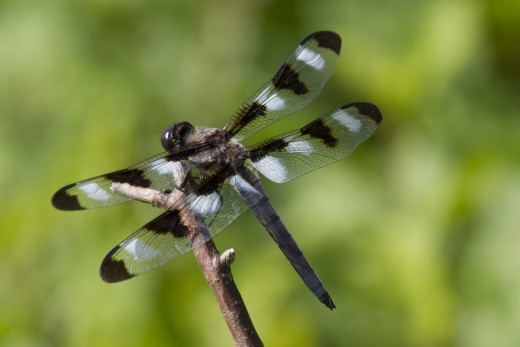
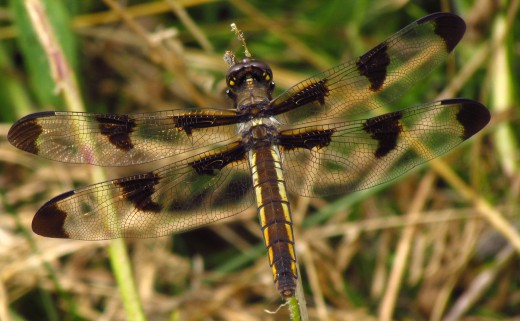
Twelve-spotted Skimmer
From the name it can be seen that twelve spots (brown or black) are distributed evenly on the wings. Twelve-spotted Skimmer are usually bigger than other types and found across the US.
The naiads and the females doesn't have any white spots on the wings where the mature male species develops white spots alongside of the black spots on the wings. The female species have angled yellow stripes on the abdomen.
Scientific Name: Libellula pulchella
Size : 4.8-5.5 cm
Range : North America, Northern Mexico, Canada.
Habitat : Ponds, lakes, and shallow waterbodies.
Flight Season: Summer
Food : Small insects.
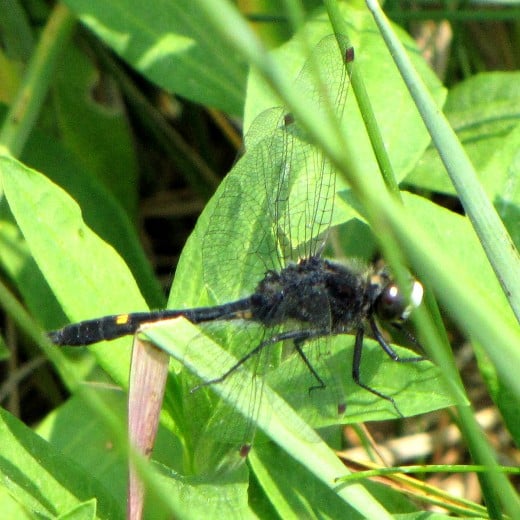
Dot-Tailed Whiteface
This type of dragonflies can be identified for having a black body and a white face with square yellow spots on the abdomen.
Scientific Name: Leucorrhinia intacta
Size : 1.4-1.9 cm.
Range : North America, Canada (British Columbia).
Habitat : Bogs, marshy lakes and ponds having dense vegetation.
Flight Season: Spring and Summer around June-August
Food : Small flies, termites, mosquitoes or mayflies.
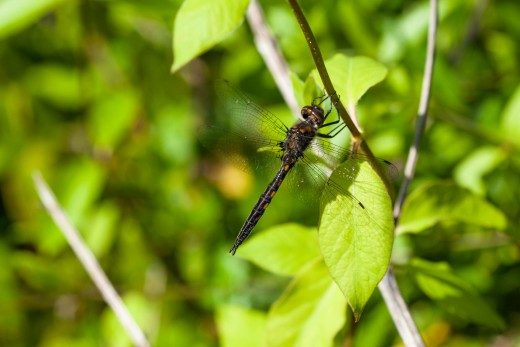
Common Baskettail
Having black or brown hairy abdomen and yellow spots at each side this species are abundant at budding vegetation.
Scientific Name: Epitheca cynosura
Size : 3.6-4.3 cm.
Range : Eastern US.
Habitat : Rivers,lakes, ponds having heavy and inchoate vegetation.
Flight Season: October to December
Food : Swarms, termites.

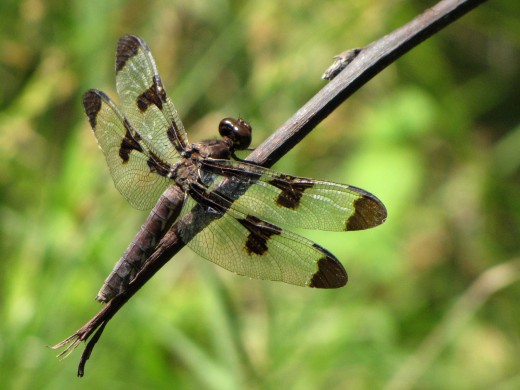
Common Whitetail
This moderate sized dragonfly is also known as "Long-tailed Skimmer" having an unique white abdomen.
The females and immature males have short, brownish-black abdomen whereas mature males have chalky white, stout abdomen with black banded pattern on the wings. The female Common Whitetail is similar to female Twelve-spotted Skimmer. A Common Whitetail female has white stripes with yellow ends on the thorax.
Scientific Name: Plathemis lydia
Size : 4.2-4.8 cm
Range : North America, Southern Canada.
Habitat : Ditches, still waterbodies, streams, marshes, lakes & warm water ponds.
Flight Season: Usually seen in Summer (Mid-June to September).
Food : Moths, small butterflies, mosquitoes etc.
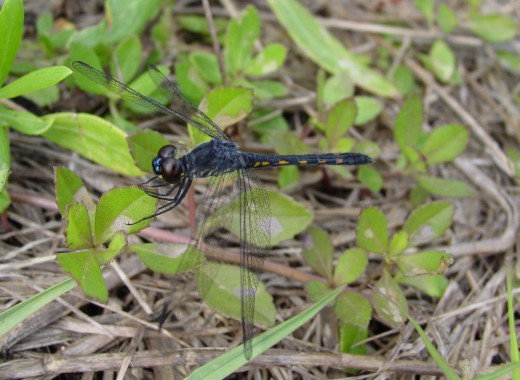
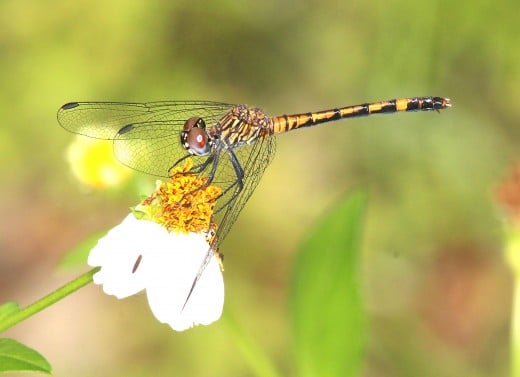
Seaside Dragonlet
Seaside Dragonlets are small and coastal species often found in saline lakes. Females and young males have black stripes on face with yellow and black striped thorax. As the male grows the face and the thorax entirely becomes black.
Scientific Name: Erythrodiplax berenice
Size : 2.9-3.5 cm.
Range : Coastal areas of Eastern and Southern North US including saline lakes, West Indies, Canada and New Mexico.
Habitat : Salt marshes, estuaries, inland lakes with high salinity.
Flight Season: May to early October.
Food : Damselflies, lacewings, winged-ants etc.
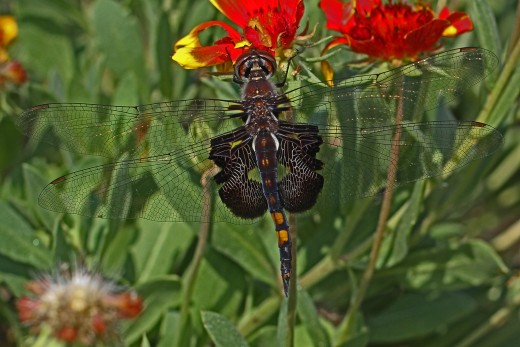
Black Saddlebags
These species are distinctive for having black saddlebags like structure at the proximal ends of their hindwings.
Scientific Name : Tramea lacerata
Size : 4.7-5.5 cm
Range : North America, Southern Canada.
Habitat : Slow streams, marshes, ponds. They are seen migrating.
Flight Season: Spring, Fall and found throughout the year at subtropical regions.
Food : Swarms, lacewings etc.
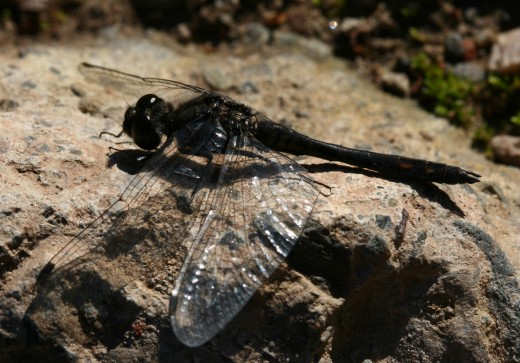
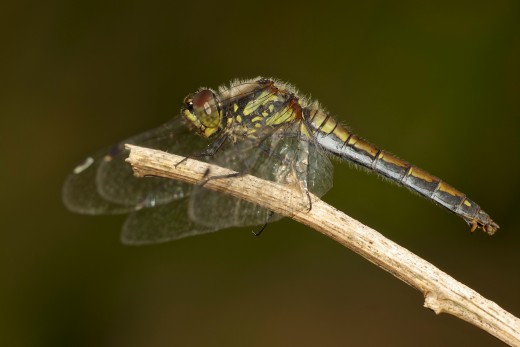
Black Meadowhawk
These dragonflies also known as Black Darter. These are narrow-bodied and relatively smaller than other species having black pterostigmata on the wings.
The mature male dragonflies are black and have small yellow markings on their sides. On the other hand, females and young males are brownish yellow in color.
Scientific Name: Sympetrum danae
Size : 2.7-3.4 cm
Range : Asia, Northern Europe, United States.
Habitat : Fens, ponds, bog pools, drainage ditches.
Flight Season: June - September
Food : Aquatic insect larvae, crustaceans etc.
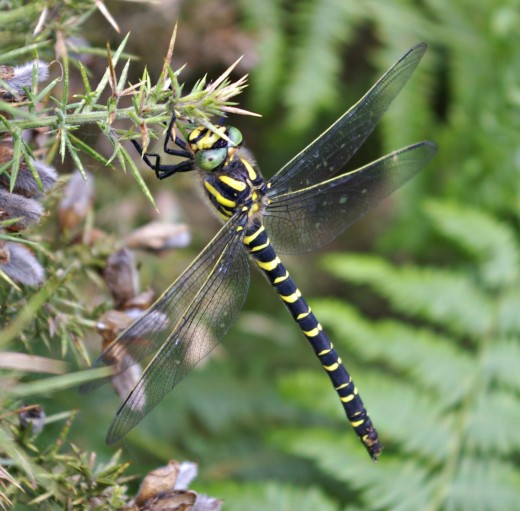
Golden-ringed Dragonfly
These species are most abundant at Britain. The thorax and the abdomen are covered with bright yellow and black stripes. Both male and female is similar to look at. But the females are identified having long ovipositor at abdomen and are relatively larger than the male Golden-ringed dragonflies.
Scientific Name: Cordulegaster boltonii
Size : Males- 7.4 cm
Females- 8.4 cm
Range : England, Wales, Scotland and India.
Habitat: Acidic streams in moorland and heathland.
Flight Season: May to September.
Food : Dragonflies, wasps, beetles, damselflies etc.
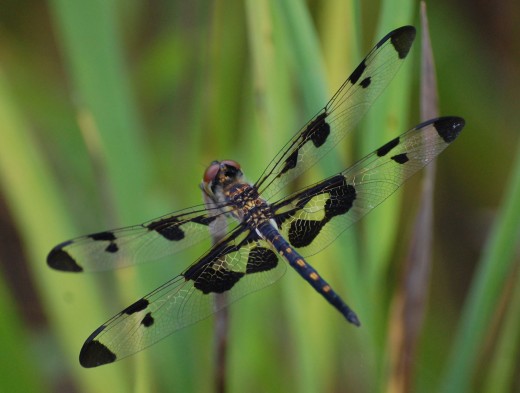
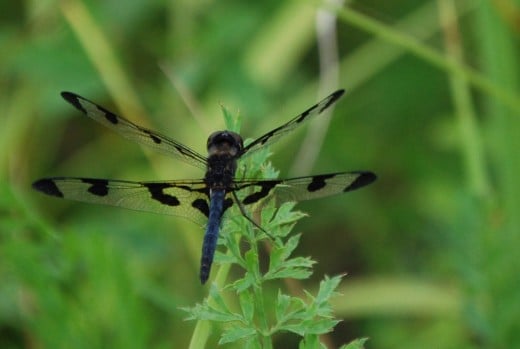
Banded Pennant
These are medium sized, dark dragonflies. Females and juveniles have bright yellow spots on the abdomen which turns bluish-black as the male ages.
Scientific Name: Celithemis fasciata
Size : 3-4.2 cm
Range : Eastern United States.
Habitat : Sand-bottomed lakes, ditches, small marshy ponds.
Flight Season: June- September
Food :Termites, mosquitos, small insects etc.
Common Feature of Black Dragonflies
Dragonflies have always been intriguing. Their incredible beauty and wondrous physique have always elated me from childhood. I used to spent hours catching them and analyzing their characteristics. This guide is just a reflection of my leisure pursuit.
By noticing the behaviors of all types of black dragonflies, its confirmed that waterbodies like ponds and lakes are their favorite places. Most of the time they lay eggs by dipping their abdomen into the water. So they are seen roaming around waterbodies with high vegetation.
Again, all black dragonflies loves mosquitos. Almost all dragonflies both big and small feed on mosquitos and termites.
Every black dragonflies can be found across the North America beside other countries.
Black dragonflies are very small and known species residing on our planet Earth having a fascinating world of their own. Each dragonfly simply illustrates some of its more engrossing features.

